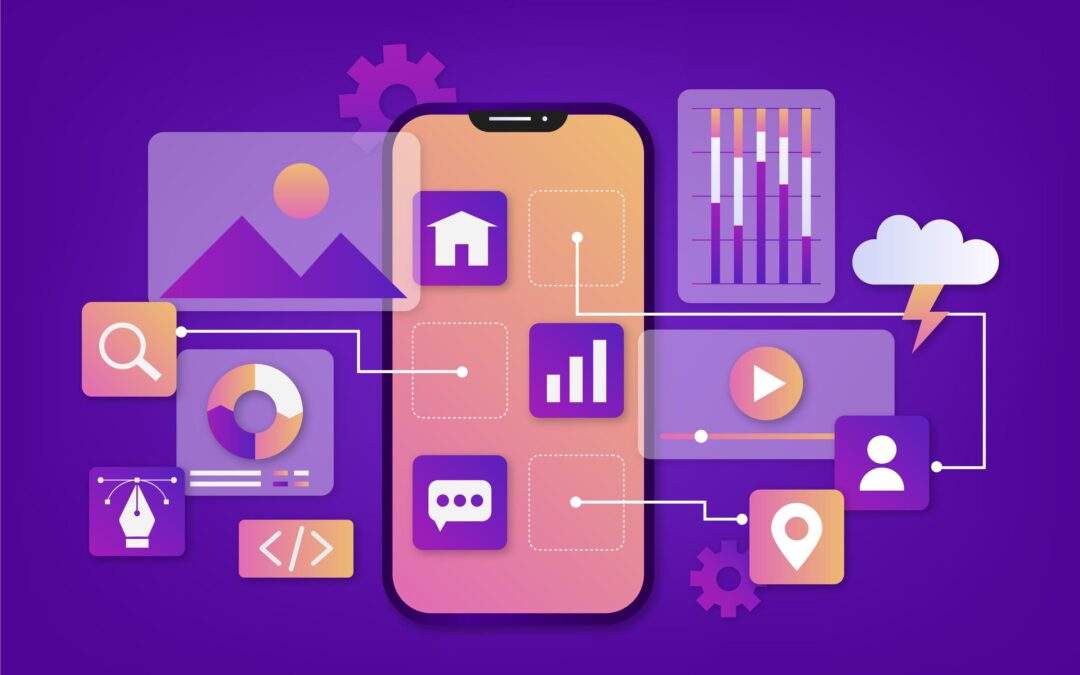The mobile industry is ever-changing. Since the advent of foldable smartphones and the introduction of AI-powered chips, 5G connectivity, and wearable devices, the interaction with the devices is evolving at an alarming rate. This means app developers will have to reconsider their app design and optimization methods.
It is no longer sufficient to create an app that appears good on a flat 6-inch screen. The upcoming generation of devices requires flexible design, efficient performance, and hardware-aware features. Those apps that cannot adapt will take a back seat, and the ones that adopt innovation will have a competitive edge.
In this blog, we will discuss how to make your app work on the next generation of devices, including the design approaches, foldable screen, hardware innovations, performance optimality, and the development practices that are future-proof.
Designing for Device Diversity:
New devices in various display sizes and resolutions, and form factors are introduced in the market every year. A design that works on one device may look broken on another. To future-proof your app, you must prepare for this diversity.
Responsive Layouts:
Responsive design is no longer just a web concept—it’s a necessity for mobile apps. A flexible UI grid ensures that your app adapts seamlessly to small, medium, and large displays.
For example:
- A shopping application must add such features as changing a product grid on a two-column grid on small phones to a column on a tablet automatically.
- Social media application must restructure the navigation buttons and lists in changing to landscape mode.
With Android Constraint Layout and iOS Auto Layout, developers are able to make sure that their applications can be used and be appealing in all screen sizes.
Scalable Assets:
Gone are the days when one set of images was enough. With retina and high-density displays, pixelated assets ruin user experience. Developers should rely on vector-based images (SVGs on Android, PDFs on iOS) whenever possible. These scale perfectly without losing quality.
Dynamic Orientation Handling:
Users frequently switch between portraits and landscapes. Apps should retain functionality without restarting or breaking layouts. For instance, a video app should expand into full-screen landscape mode while maintaining playback controls and subtitles.
Preparing for Foldable and Dual-Screen Devices:
One of the largest technological advances in mobile hardware is foldables. Gadgets such as the Samsung Galaxy Z Fold and Microsoft Surface Duo enable screens to be expanded, folded and show several applications simultaneously. These devices need to be optimized.
Continuity Across States:
When a device is folded out of a small phone-sized display to a tablet-like screen, the users expect a smooth transition. Imagine that you are reading an article on a folded screen, and then unfolding it to read on a bigger screen without having to resume reading where you are.
Android offers the Jetpack Window Manager API that assists developers in identifying the folds in a device and managing the layout accordingly. For example:
- An app could display only a chat window on fold, then the chat and contacts window on unfold.
Split-Screen Awareness:
Foldable devices encourage multitasking. Users may have your app open on one half of the screen while another app runs alongside it. If your app cannot handle this, it will feel outdated.
To optimize:
- Ensure your app works well in multi-window environments.
- Avoid placing crucial elements (like buttons or menus) in areas where the fold or hinge cuts through the screen.
- Support drag-and-drop actions across windows for productivity and creativity apps.
Multi-Window Features:
Some foldables allow a single app to span across two screens. For example, an email app could display the inbox on the left and the selected message on the right, similar to a desktop email client. Designing apps with such flexibility improves usability and sets your app apart.
Leveraging Hardware Innovations:
Hardware is improving more than the increased size of screens. Phones have become faster with more advanced processors, AI chips, more advanced cameras and increased connectivity choices. Applications that can adopt these innovations are capable of providing experiences that are unique and powerful.
5G Optimization:
The 5G offers high-speed and low-latency transmission. This should be exploited by apps by providing features that were not feasible earlier, which include:
- Online gaming with low lag.
- AR shopping applications, which are real-time 3D product models.
- Professional collaboration tools, in real-time.
Nevertheless, apps should also be gracefully degraded in case of no 5G connection, and instead, fall back to 4G or offline.
On-Device AI and Machine Learning:
The majority of flagship devices now come with neural processing units (NPUs) to do AI. These can be used locally to process data by developers. For example:
- A translation application may be able to translate speech in real time without the use of the internet.
- Photo editing application: This may help users improve their photos by using AI filters on the phone.
On-board AI can now be integrated easier than ever with frameworks such as TensorFlow Lite (Android) and Core ML (iOS).
Advanced Camera APIs:
The camera on smartphones is no more about pictures. They embrace depth sensors, multi-lens, and augmented reality (AR) functionality. These APIs can be exploited by the developers to:
- Allow fashion and retail apps to do virtual try-ons.
- propose AR navigation on travel applications.
- Improve creativity in photo and video editing applications.
Wearables and IoT Integration:
Smartwatches, earbuds, and IoT devices are connecting users at an increasing pace. Applications that allow you to do more with the phone produce a digital ecosystem. For instance:
- A fitness app may be connected to a smartwatch to track the heart rate in real-time.
- A music app can also be linked to smart speakers or earbuds to play via voice control.
Performance and Battery Efficiency:
- Even devices that are most advanced have their limits. Users do not stick to slow and battery-draining apps. The optimization of performance should be considered first-rate.
- Efficient Rendering
- Make sure they use animations and transitions at 60 FPS or more. Make wise use of GPU acceleration and reduce overdraw, which means that several layers are being drawn on top of one another when this is unnecessary.
Adaptive Scaling of performance:
Not all devices are equal. Your application must be intelligent enough to add or remove features based on the hardware. For example:
- Likewise, a game may display high-quality textures on high-end devices but fall back to low-quality textures on mid-end devices.
- Editing video software might be capable of more complex effects only on high-GPU devices.
Intelligent Background Control:
Background activities, such as data synchronization or receiving updates, may be battery-draining when not handled. Best practices include:
- Managing Work Manager (Android) schedules or Background Tasks (iOS) schedules.
- The utilization of push notifications in place of constant polling.
- Stopping updates when the application is not used actively.
Inclusive Design and Accessibility:
Inclusive design is not a choice anymore; it is a necessity. As the trend of accessibility features in new devices continues, anyone should be able to use your app, whether or not they have an ability.
Voice and Gesture Inputs:
Each new device offers more and more voice, gestures, and even eye tracking. For example:
- A voice command would allow a user to scroll through a news application.
- They would be able to navigate across a page by just swiping across the air as they use the gesture application.f
Adaptive Text and Colors:
Dynamic font resizing, dark mode, and high contrast. This not only makes it easier to read for those with a visual impairment but also increases usability.
Assistive Technologies:
Check your app using Talkback (Android) and Voiceover (iOS). Provide alt text to images and make your UI navigable by a screen reader. Haptic feedback also helps to engage users with impaired hearing to make apps even more interesting.
Future-Proofing Development:
Technology evolves quickly, and apps must evolve with it. Developers can stay ahead by adopting strategies that make their apps easy to update and maintain.
Modular Architecture:
Applications developed in a modular manner are simpler to reconfigure. When a new device form factor comes out, you can upgrade only one module rather than the entire application.
Cross-Platform Frameworks:
Multi-platform Frameworks such as Flutter, React Native, and Kotlin Multiplatform enable a single codebase to be run on multiple platforms. It provides consistency and shortens the time of development.
Continuous Testing:
All the devices cannot be tested manually. Simulate foldables, tablets, and wearables with cloud-based testing environments such as Firebase Test Lab or Browser Stack. Continuous integration pipelines can automatically test new builds on a variety of configurations.
Final Thoughts:
Mobile technology has a bright and unpredictable future. The devices of the future will transform the way people use programs with foldable screens, AI-driven hardware, wearables, and 5G connectivity.
- As a developer, it is difficult to create apps that are:
- Scalable to other screen sizes and form factors.
- Foldable and dual-screen adaptive.
- Creative through the use of hardware capabilities, such as AI, AR, and IoT.
- Fast performance and battery consumption.
- Inclusive by promoting accessibility features.
With these in place, you will be able to make sure that your app will not only work with the devices we currently have but will also be prepared in case of any changes to the current ones. Those who adopt these strategies today will eventually become leaders in the mobile ecosystem as technology keeps changing.
Future-Proofing Apps for Foldables, 5G, AI Chips & Next-Gen Devices
Discover how the next generation of devices—foldable smartphones, AI-powered chips, 5G, and wearables—are transforming app development. Learn future-proof design and optimization strategies to make your app adaptable, efficient, and competitive in the evolving mobile industry.
Got time? Explore more!
Case Study: How We Helped a Mid-Sized Company Optimize Their Mobile App’s Performance
Three people with VR headsets analyzing a digital dashboard of business data, highlighting data-driven decision making.
Data-Driven Decision Making: Your Competitive Edge
Three people with VR headsets analyzing a digital dashboard of business data, highlighting data-driven decision making.
Leveraging Machine Learning to Enhance Customer Experience
understand the critical importance of Responsible and Ethical AI in building customer trust




